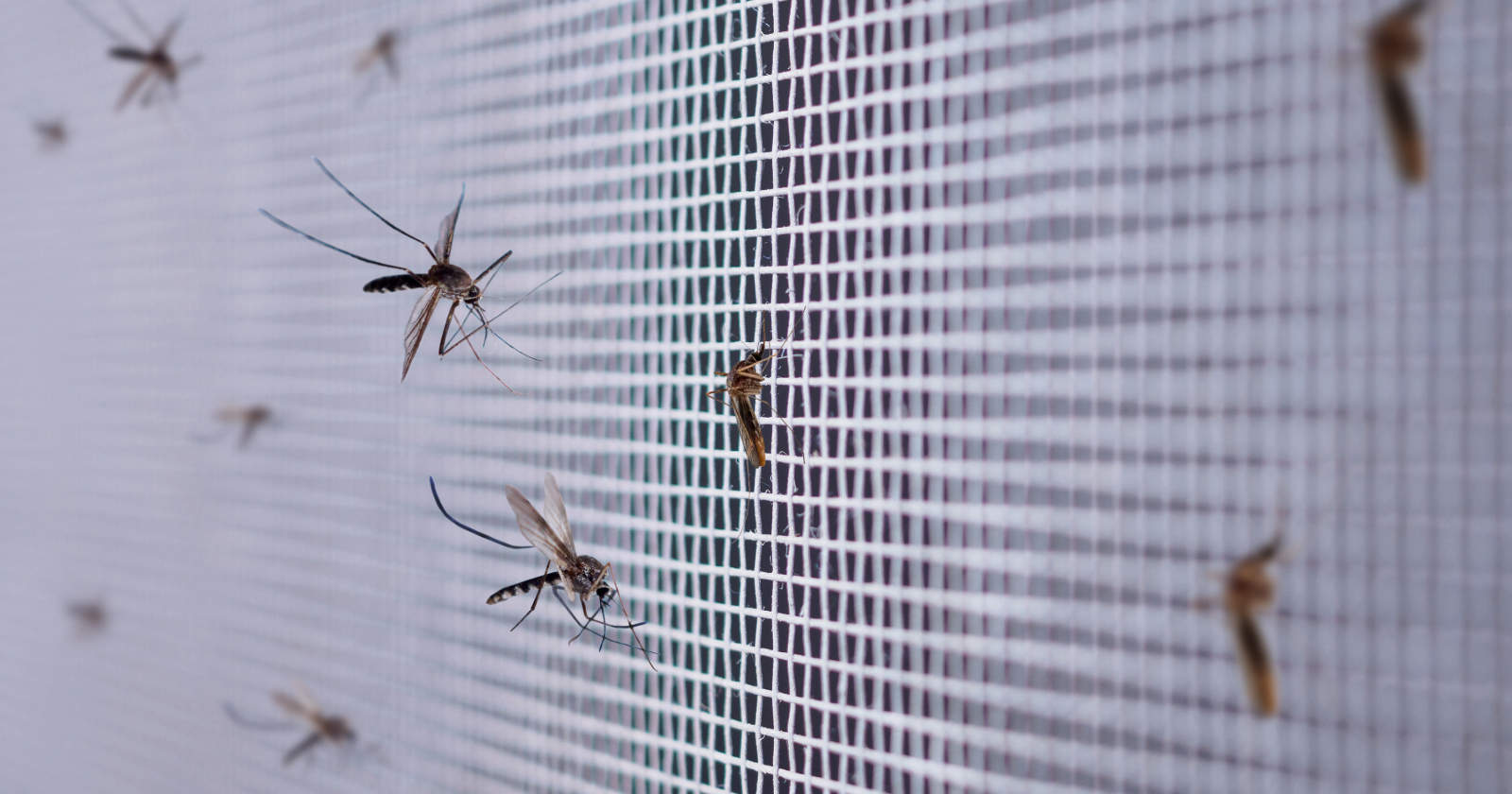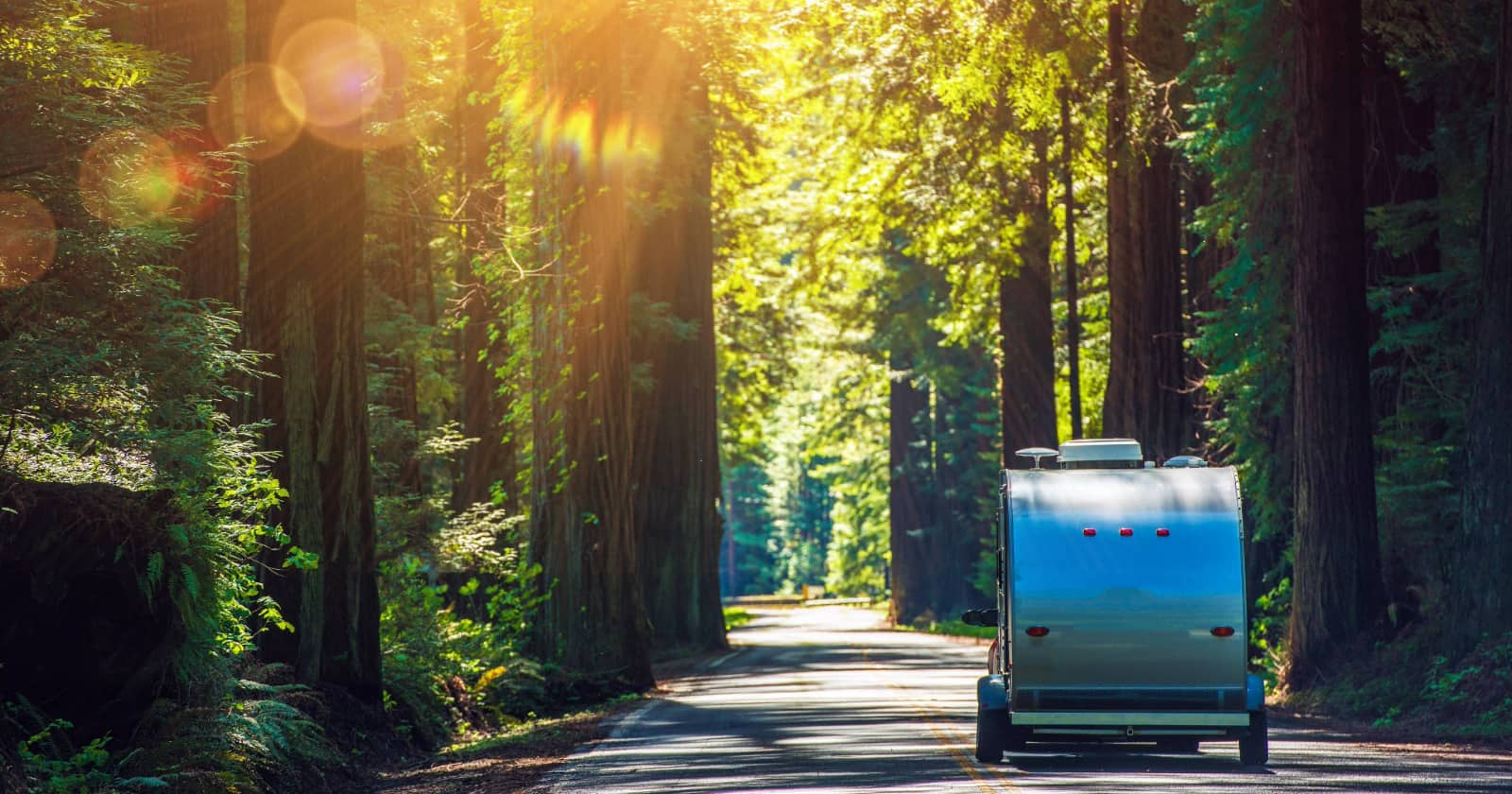If you’ve never experienced the itchy wrath of poison ivy before, consider yourself lucky. It really is miserable and something you don’t want to deal with. But, you can always save yourself from the irritating rashes in the future. All you need to know is how to identify it from other plants, and avoid it all together.
Poison ivy grows almost anywhere and everywhere. You may come across it in the woods, in your garden, by the beach, or even just growing in your own backyard. It causes the annoying rashes because of an invisible oil known as urushiol, found on its leaves, stems, and roots.
But since that’s not something we can see with our own eyes, by the time you’ve come into contact with the plant, it will usually be too late and the oil will already have gotten on your hands. So it’s best to just be able to identify poison ivy when you see it, and to keep an eye out for it in the future. Here are some of the dreaded plant’s most unique distinctions.
Poison ivy leaves always grow in groups of threes.
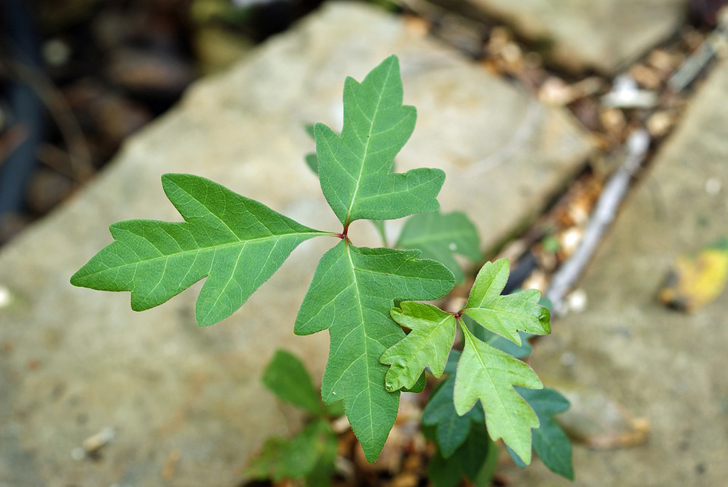
True, there are a lot of other plants that have three leaves, but most times when you see one with three leaflets, all of which are pointed at the tip (as seen above), it should definitely be a red flag.
It also grows as vines, with a furry, hairy look.
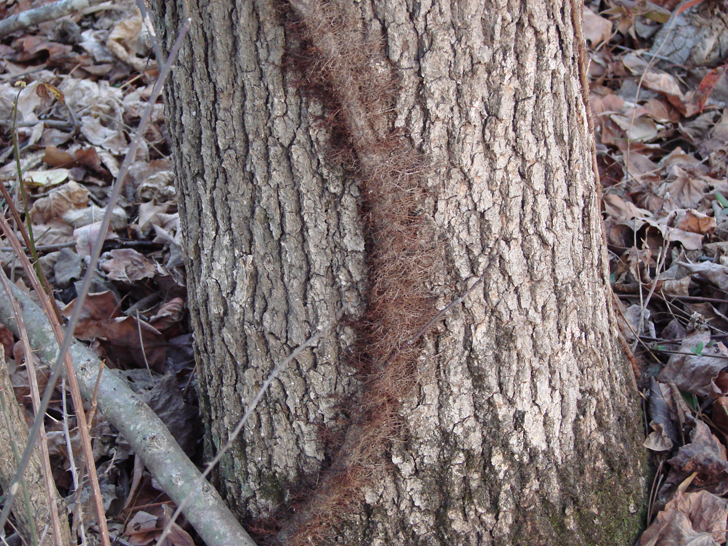
Poison ivy vines are just as dangerous, even if they aren’t green and leafy. They can grow up to six inches thick, and stretch over 100 feet tall, covering places like fences, tree trunks, and gardens.
Poison ivy bushes grow white or green berries.
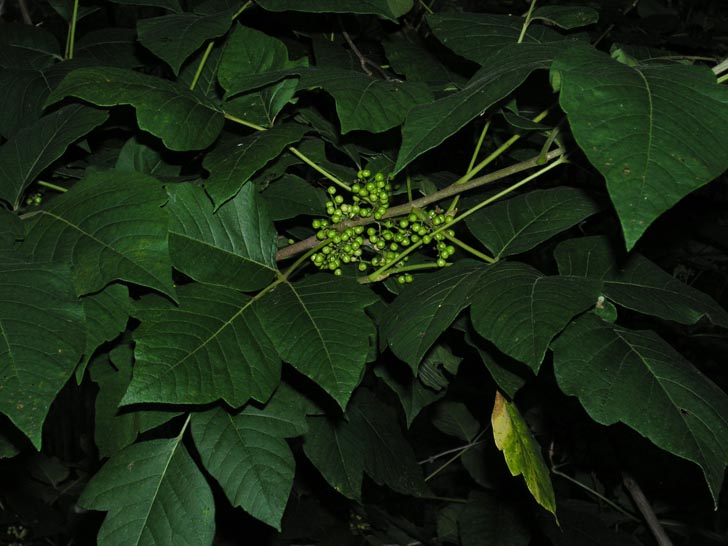
As hungry as you may be, these are not the kind of berries you’ll want to snack on. They’re a pale green in the summer, and a white-ish, waxy color by fall. In fact, berries on all types of ivy plants are best to be avoided. Most contain oxalates, which are basically needle-like crystals that can cause pain and swelling in the lips, face, tongue, and skin. Even though the leaves have fallen by winter, poison ivy berries will still stick around all year.
Butterflies are landing on it.
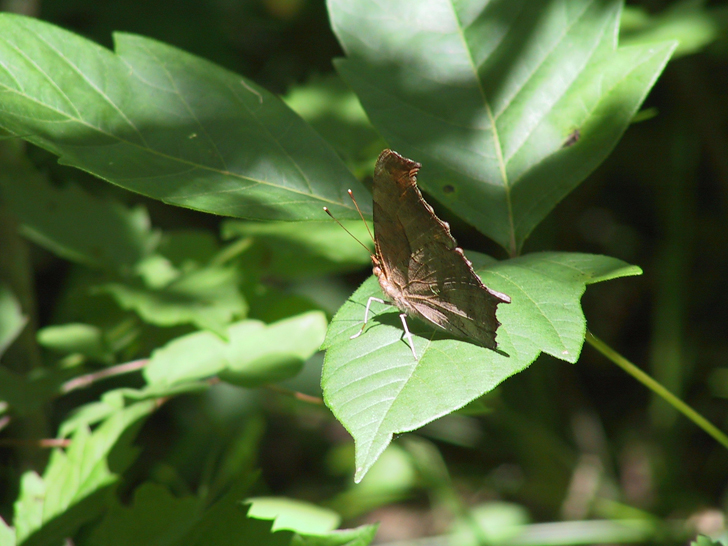
Some butterflies will land on poison ivy as a way to deter predators. Unlike humans, they’re not actually affected by the plant, so they can use it for protection since many predators who are looking to eat them will avoid the plant.
Sometimes, they have a side leaflet that looks like the thumb on a mitten, or an oven mitt.
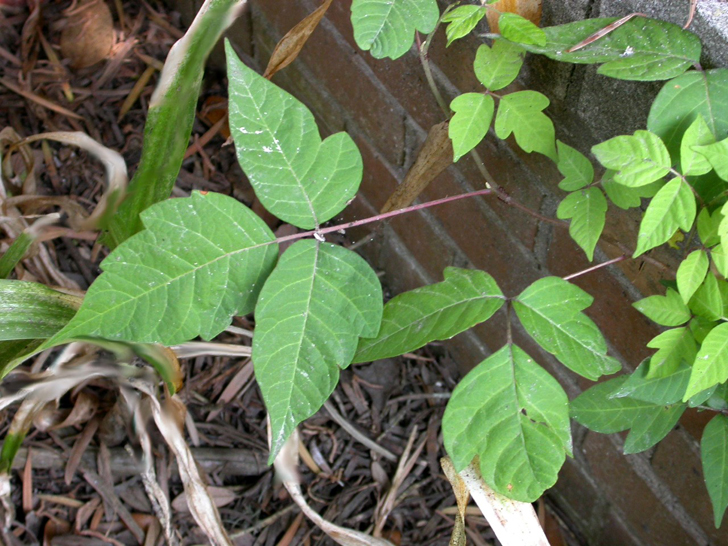
The middle leaflet also typically has a much longer stem than the other two.
Don’t be fooled by the color. Poison ivy varies from green in the summer, to reddish-orange in the fall, and various shades of red and orange in the spring.
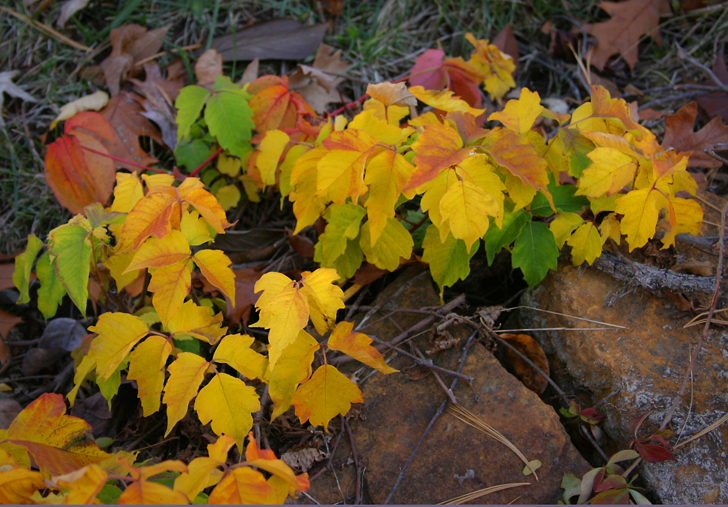
And by wintertime, the leaves should have all fallen off. But even with the color change, the urushiol oil – which will give you that bothering rash – will still be on the leaves.
Poison ivy never has thorns.
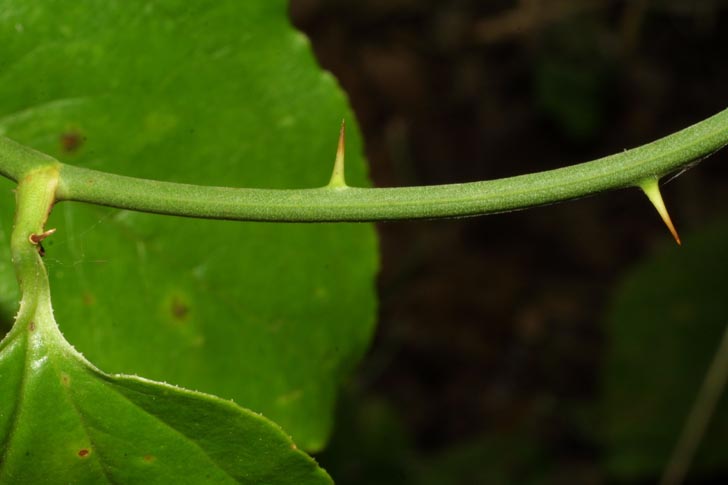
Even just a few thorns will tell you that it’s not ivy. Sometimes, thorny blackberry or raspberry bushes will be mistaken for poison ivy, because they also grow three leaflets.
Like most plants, poison ivy does have quite a few look-a-likes. It also gets confused with:
Fragrant Sumac
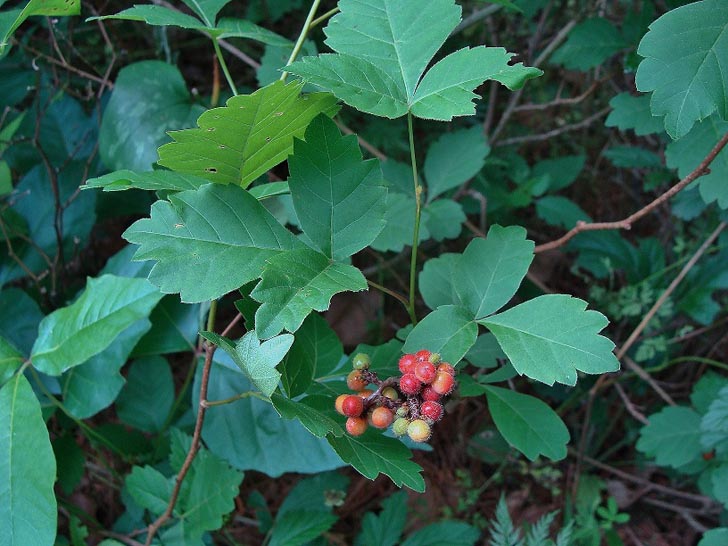
This one is admittedly tough, because the leaves grow in threes like poison ivy, and the edges are a little pointy too. But Fragrant Sumac will often have clusters of furry red berries growing with them (while poison ivy berries are always a light green or pale white).
Virginia Creepers
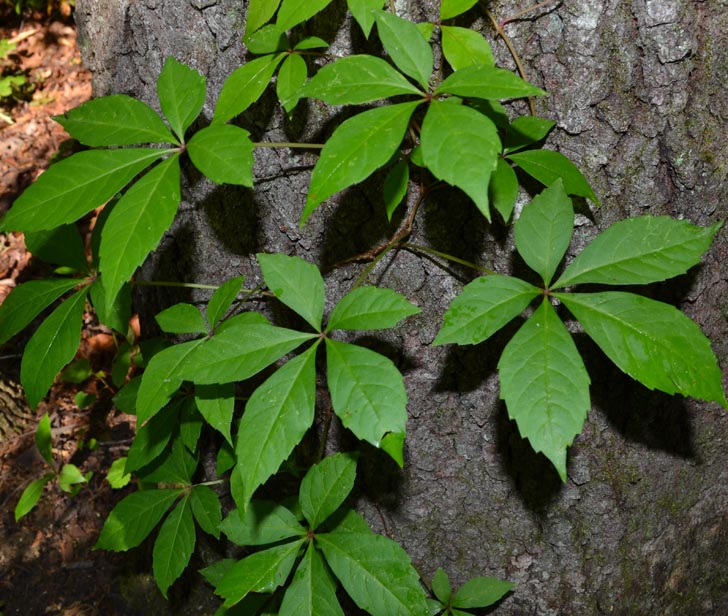
The most notable way to tell Virginia Creepers apart is the fact they don’t always grow in threes. The plant usually grows 5 leaflets (as seen above) or sometimes even 7.

